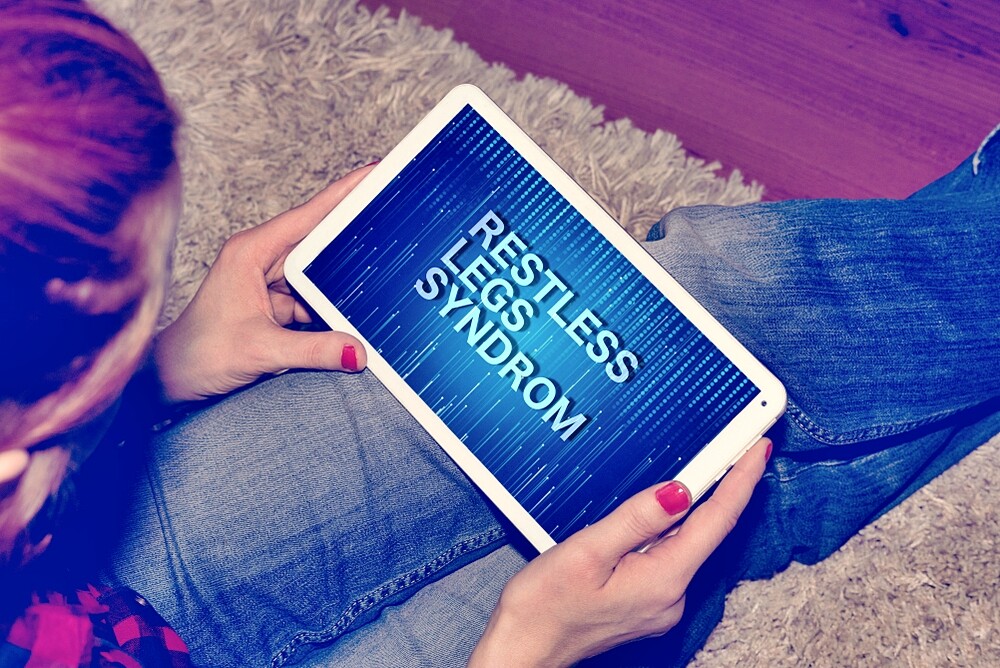Restless Legs Syndrome causes a constant urge to move the legs, especially at night. Here you can find out what can help.
What is restless legs syndrome?
Restless Legs Syndrome (RLS), also known in this country as “restless legs”, ensures that you have a constant urge to move your legs and feet. Especially at night or generally at rest, which is why the syndrome is also counted among sleep disorders. In some cases the arms are also affected.
RLS is most noticeable by tingling or pulling, which disturbs sleep and therefore often leads to exhaustion and tiredness in the long run. There are several possible causes for Restless Legs. The syndrome is often associated with a disorder of the dopamine metabolism: the messenger substance dopamine plays a major role in the targeted control of movements.
Who does restless legs syndrome affect?
RLS occurs relatively frequently: Approximately 10 out of 100 people suffer from restless legs syndrome, with women being affected more often than men. But children can also become ill.
Symptoms: How does restless legs syndrome manifest itself?
The following symptoms indicate RLS:
- Tingling, pulling, pain, feeling of warmth, tension in legs and feet, resulting in a constant urge to move, especially at night.
- Relief when you actually move your legs, for example by running, squats, tensing the muscles. As soon as one rests again, the symptoms reappear.
- In some cases, twitching in legs or arms while the person is sleeping. This can also wake him/her up for a short time, but he/she will not notice anything directly. Only later does the resulting lack of sleep become noticeable through exhaustion, persistent tiredness, lack of concentration, poor performance and forgetfulness.
If Restless Legs Syndrome is not treated, the symptoms will become more severe over time and may occur more frequently later in resting periods during the day. This becomes noticeable when driving a car or going to the cinema, for example, and can have a significant impact on everyday life. In the worst case, RLS can also lead to depression or – if the pain persists – chronic pain syndrome.
What are the causes of Restless Legs Syndrome?
Restless Legs can have different triggers, but they have not yet been fully clarified. Among the causes are:
- Iron deficiency
- Nerve damage
- Advanced kidney weakness
- Pregnancy
- Certain drugs, e.g. for nausea or antidepressants
- Genetic factors
- Thyroid gland diseases
- Anemia (also often caused by iron deficiency)
If RLS develops as a result of pregnancy, the phenomenon often disappears again on its own after birth.
The doctor can often determine whether restless legs syndrome is present by a simple examination and a blood test. In some cases, a stay in a sleep laboratory can also provide information.
Treatment: What helps against Restless Legs?
The syndrome of restless legs is treated depending on the cause. If it is due to iron deficiency, it can be controlled with iron tablets. If it is not clear what trigger RLS has, various drugs can be used.
For example, if a disorder of the dopamine metabolism is suspected, so-called dopamine anatagonists can be used in the treatment, which virtually replace the dopamine in the brain. Scientific studies have shown that these drugs can be effective against the symptoms of RLS. However, these drugs can cause side effects such as nausea or more severe sleep disturbances. And: they can even intensify the symptoms of RLS during treatment (“augmentation”).
Patients should therefore be in regular contact with their doctor while taking these drugs. However, even this does not always help: about one in five patients discontinue treatment with the drugs because they either do not achieve the desired effect or the side effects are too severe.
Tips for dealing with the disease RLS
There are a few basic tips that can make life with RLS easier. Not every tip helps every person affected equally well, but it is worth trying out different methods. The following tips can help with Restless Legs:
- Observe iron intake: It is always better to replenish the iron supply with food containing a lot of iron rather than with appropriate preparations. Foods containing iron include pork liver, wheat bran and pumpkin seeds. A blood test can show whether there is an iron deficiency.
- Set for night rest: In order for the body to shut down and adjust to the night, we should give it time to relax. This can be done by taking a warm bath or using relaxation techniques such as autogenic training, progressive muscle relaxation or Hatha Yoga.
- Do without a nap: Those who sleep badly because of their complaints should rather do without an afternoon nap, as this can increase the sleep problems.
- Doing without stimulants: stimulants such as alcohol and cigarettes can increase sleep disorders and stimulate the body. The same applies to drinks containing caffeine – it is better to avoid them in the evening.
- Reduce stress: Stress and anxiety can exacerbate the symptoms of RLS. It is therefore important to build recovery times into your everyday life, in which you only do what you really feel like doing and where you can relax.
- Keep to bedtime: Whoever goes to bed at the same time supports his waking-sleeping rhythm. This also helps with RLS.
- Spoil your legs: Alternate showers, light massages, warm calf wraps as well as stretching and light sports exercises also reduce the symptoms.
- Light dinner: The stomach should not be heavily loaded before going to bed. Instead of rich meals, only light snacks should be taken in the evening.

